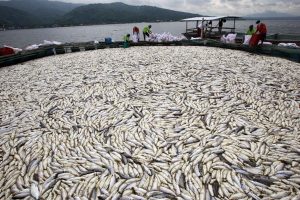As we have learned in class, the food industry plays a major role in environmentalism. Since the turn of the century we have seen some progress concerning sustainably produced agriculture. One enclave of this movement is the widespread popularity of Farmer’s Markets. Specifically in Charleston, we have a major market that sets up in Marion Square on Saturdays during the season. The city’s Parks and Rec department recently noticed that expansion of the market might be beneficial, so this past November, West Ashley hosted its first trial Farmer’s Market. It was to be held in Ackerman Park (which is a block from my house) on Wednesday evenings from 3:30-7:30.
I attended the market every week for a month and a half, mainly to purchase my supply of fresh fruits and vegetables, but I also intended to ethnographically observe the West Ashley Farmer’s Market. I was curious about the who, what, and how of establishing a new market in a suburban community.
From week to week I saw an eerie consistency to the market. A majority -mainly all – in attendance were white, of middle-class, wearing nice business clothes, pushing strollers, carrying dog leashes, and meeting up with others of similar status. There were only two stands with fresh produce from local farms. The other stands offered products with added preservatives, such as jams, pies, and sauces. Most of the booths were corporate companies serving prepared foods, like Roti Roll, Charleston Crepe Company, and Smoke BBQ. You could leave the market with a quarter of the items that you could get for the same price at Food Lion.
We have certain ideals for what we expect out of a farmers market. Some common objectives include shopping for variety, promoting health and sustainability, supporting local farmers, utilizing an alternative food source, and advocating for the go green movement. However, there is a sense of identity that comes from shopping for commodities of a certain caliber – think heirloom, exotic, organic. The focus shifts from being less about the produce itself and more about who is and, moreover, who isn’t shopping here.
The process of identity formation can intersect with class and race, producing exclusion of those who don’t fit a particular mold. Shoppers must be willing to pay a high price for products they didn’t grow or make themselves. Creating social barriers sets us back from sustainable living as these public places are transformed into private space due to informal social boundary construction. It seemed clear but strange to me that neighborhood parks (which supposedly promote community involvement) and farmers markets (promote a sense of health and supporting local) could be counterproductive to environmentalism as a whole.
I absolutely agree that buying local is an important step to reducing our ecological footprint; however, if food security is presented as socially exclusive, as it was at the West Ashley Farmer’s Market, is this actually holistic and sustainable? There is a need for an overarching systematic change that allows fresh produce to be readily available to all races and SES. I just want to point out that it is necessary to examine how we present sustainable food, how we idealize the green consumer, and why we have fetishized trendy movements such as Farmer’s Markets.


